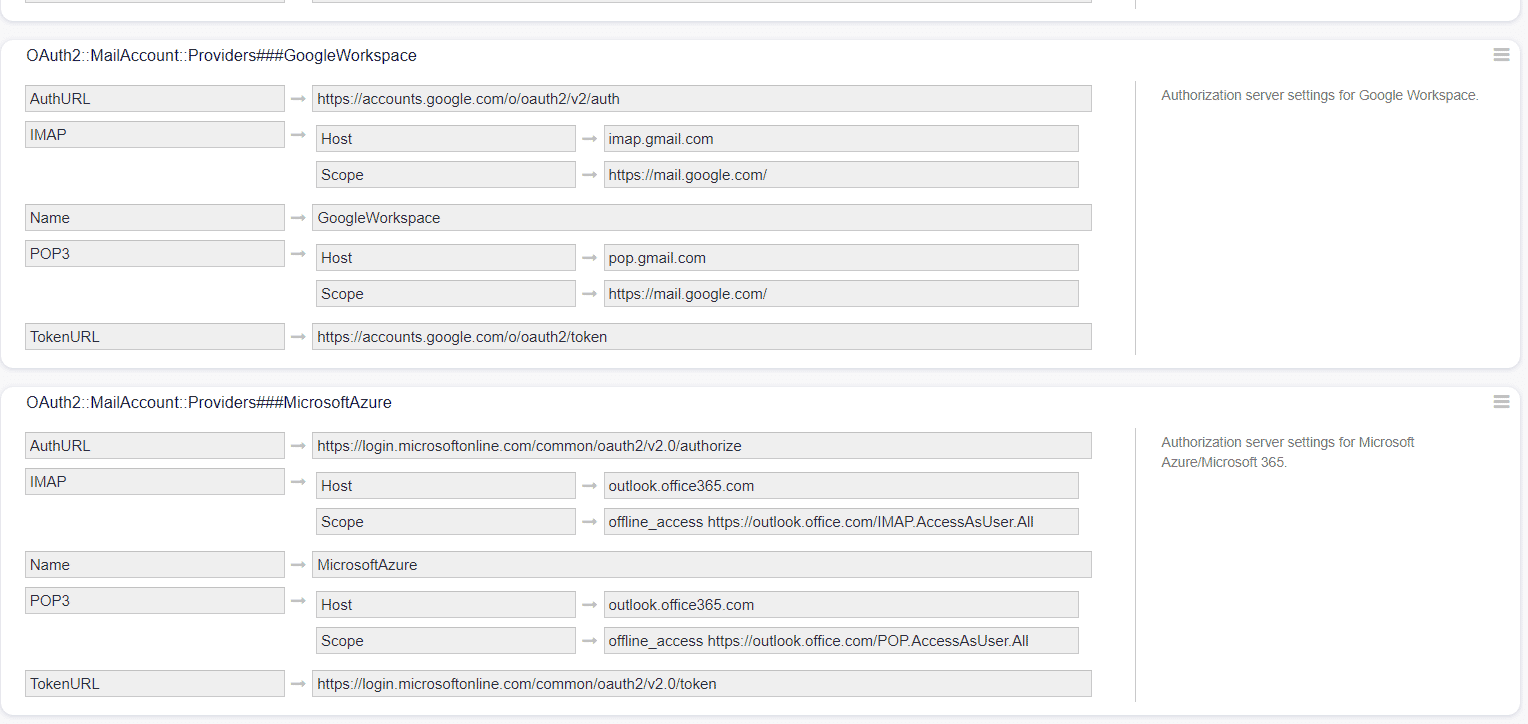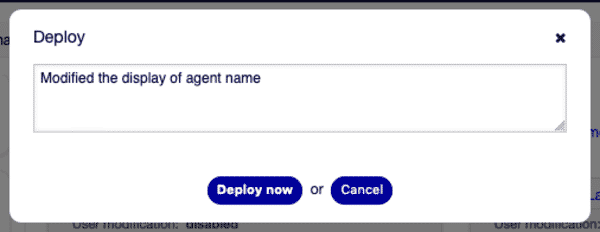description: > Manage your system configurations with OTOBO efficiently: Quick review, easy changes, and seamless rollback via a user-friendly graphical interface.
OTOBO / Znuny System Configuration – Managing Settings

The System Configuration in OTOBO/Znuny is the core for customizations and fine-tuning: – All changes are made through a central graphical interface. – Versioning and audit logs document who changed what values and when. – In case of errors, any setting can be rolled back to a previous state.
1. Quick Start: Opening System Configuration
- Log in as an administrator to the Agent Interface.
- Navigate to Administration → System Configuration.
- Use the full-text search bar to immediately find what you need among the approximately 2,200 configuration keys.
2. Finding and Opening a Setting
- Enter search term – the full-text search scans names, descriptions, and values.
- Select result:
- Expand widget:
3. Editing and Saving Values
Hover over the widget → "Edit this setting":
Change the value and click Save:
Confirm the change:
4. Version Comparison & Rollback
After saving, a diff log is automatically generated – showing old vs. new values at a glance:
If something goes wrong, you can always jump back to the previous value by clicking "Rollback":
5. Activating Changes (Deploy)
Clicking "Deploy Settings" applies all local changes:
6. Navigation & Category Tree
The side navigation tree organizes configurations by modules and sub-groups. Each category shows the number of its entries in parentheses:
This helps you keep track even with add-on packages (e.g., ITSM, FAQ, OAuth).
7. Importing & Exporting Entire Configurations
- Export: Create backups or transfer your settings into
.ymlfiles. - Import: Load previously exported configurations into another system or synchronize test/staging instances.
8. Special Cases & Best Practices
8.1 Logos & Branding
Change the Agent logo centrally via
Frontend::Agent::LogoURL
And customize the customer portal logo:
Frontend::Customer::LogoURL
8.2 Authentication & SSO
Flexibly enable OAuth2/OpenID Connect or LDAP – entirely via System Configuration:
Core::Auth::Agent::Module
Core::Auth::Customer::Module
8.3 Dynamic Fields via Configuration
Add new DynamicField drivers without programming:
Core::DynamicFields::DriverRegistration8.4 Controlling Menu Modules Individually
Enable or disable front-end modules like AgentTicketZoom or CustomerTicketSearch via configuration:
Frontend::Agent::ModuleRegistration
9. Conclusion
The OTOBO/Znuny System Configuration provides you with:
- Real-time Search Functionality: Find any key in seconds.
- Audit & Versioning: Every value change is documented.
- Rollback Mechanism: One click back – no fear of misconfigurations.
- Import/Export: Perfect synchronization between production, staging, and test instances.
With these features, you can adapt your OTOBO system securely, transparently, and agilely to any new scenario – from branding and authentication to custom plugins.
For more details, refer to the official OTOBO Documentation.
Popular System Configurations
Here are the 30 most frequent system configurations in a clear table.
| Configuration Key | Description | Value |
|---|---|---|
NotificationSenderEmail | Sender email address for system notifications | support@<OTOBO_CONFIG_FQDN> |
PostmasterDefaultQueue | Default queue for the Postmaster | – |
FirstnameLastnameOrder | Order of first and last name | – |
Elasticsearch::TicketSearchFields | Fields used for ticket search in Elasticsearch | – |
Elasticsearch::TicketStoreFields | Fields used for storing tickets in Elasticsearch | – |
GenericAgentAllowCustomScriptExecution | Allows the Generic Agent to execute custom scripts | – |
DashboardBackend::AllowCmdOutput | Allows displaying console output in the dashboard | – |
Ticket::Frontend::CustomerTicketZoom###StateDefault | Default status for the customer ticket view | – |
Ticket::Frontend::CustomerDisableCompanyTicketAccess | Disables customer access to company tickets | – |
ACL::PossibleNot→Form→<FieldName> | ACL setting for negated form conditions | – |
PostmasterFollowUpState | Status for Postmaster follow-up emails | – |
PostmasterFollowUpStateClosed | Closed status for Postmaster follow-ups | – |
Ticket::Frontend::AgentTicketZoomReply | Allows replies in Agent Ticket Zoom | – |
AgentTicketCompose | Settings for composing new agent tickets | – |
Ticket::Frontend::MenuModule###550-Appointment | Menu module for appointments in the ticket frontend | – |
Ticket::Frontend::MoveType | Settings for ticket move type | – |
Ticket::Frontend::AgentTicketMove###RequiredLock | Requires lock when agents move tickets | – |
Ticket::Frontend::TicketNote###OwnerMandatory | Enforces mandatory "Owner" field for ticket notes | – |
Core::Crypt::PGP | PGP encryption settings | – |
CustomerDashboard::Tiles###ServiceCatalog-01 | Dashboard tile for the Service Catalog | – |
Frontend::Module###CustomerTicketMessage | Frontend module for customer ticket messages | – |
CustomerTicketMessage | Configuration for customer ticket messages | – |
CustomerDashboard::Tiles###TicketList-01 | Dashboard tile for ticket list | – |
CustomerFrontend::Module###CustomerTicketMessage | Customer frontend module for ticket messages | – |
Ticket::GenericAgentAllowCustomScriptExecution | Allows Generic Agent to execute custom scripts (Ticket module) | – |
Ticket::Frontend::AgentTicketNote###Subject | Subject setting for agent ticket notes | – |
Core::Time::Calendar1 | Time settings for Calendar 1 | – |
TimeAccounting | Time accounting module | – |
DynamicField_<Name> | Placeholder for dynamic fields | – |
Ticket::NumberGenerator::MinCounterSize | Minimum counter length for ticket numbers | – |














